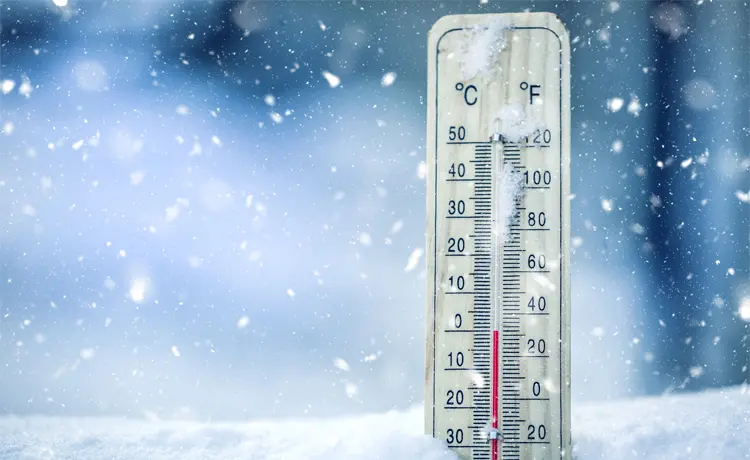Military personnel often find themselves in new locations, and that can present unfamiliar weather challenges. If you have recently relocated to a cooler climate, learn how to prepare and stay safe in extremely cold weather.
Extremely Cold Weather
Every U.S. region can have extreme winter weather conditions, especially in places like Alaska, the Rockies, the Midwest and Plains, the Mid-Atlantic and New England. A major winter storm can last for several days and be accompanied by high winds, freezing rain or sleet and heavy snowfall. Extreme cold can be felt during or after a winter storm and can leave you and your community vulnerable to the effects of windchill, frostbite and hypothermia.
Wind Chill
Wind chill is based on the rate of heat loss from exposed skin caused by the effects of wind and cold (it’s the temperature your body feels when air temperature is combined with wind speed). As the speed of the wind increases, it carries heat away from your body very quickly, causing your skin temperature to drop. Here are some tips for protecting yourself against wind chill:
- Dress in layers.
- Make sure your layers are loose, lightweight and warm.
- If you get too hot, remove layers to avoid sweating and getting the chills.
- Outer garments should be tightly woven and water-repellent.
- Wear a hat.
- Cover your mouth to protect your lungs from extreme cold.
- Wear mittens (not gloves) that are snug at the wrist.
- Stay dry.
Frostbite
Frostbite is an injury to the body caused by freezing that results in a loss of feeling and color in affected areas, which are most often the nose, ears, cheeks, chin, fingers and toes. Frostbite can leave permanent damage and severe cases can lead to amputation. You are at higher risk if you have reduced blood circulation or if you’re not dressed properly for extremely cold weather. At the first signs of redness or pain in any skin area, get out of the cold or protect any exposed skin – frostbite may be starting.
If you experience white or grayish-yellow patches of skin, or skin that feels firm or waxy, or if any body parts are becoming numb, get medical care immediately as severe frostbite may be setting in.
Hypothermia
Hypothermia (an abnormally low body temperature) is a medical emergency! When exposed to extreme cold, your body loses heat faster than it can produce it. Prolonged exposure to cold will eventually use up your body’s stored energy and result in hypothermia. Body temperature that is too low affects the brain, making the affected person unable to think clearly or move well. This makes hypothermia dangerous because the person may not know it is happening and won’t be able to do anything about it. In adults, hypothermia can cause the following:
- Shivering
- Drowsiness
- Confusion
- Slurred speech
In infants, hypothermia can cause bright red, cold skin and very low energy.
f you notice any of signs of hypothermia, take the person’s temperature. If it is below 95°F, the situation is an emergency – get medical attention immediately.
A person with severe hypothermia may be unconscious and may not seem to have a pulse or to be breathing. In this case, handle the victim gently and get emergency assistance immediately, and provide CPR. Remember that hypothermia (a medical emergency) and frostbite require medical care. Consider taking a first aid and emergency CPR course to prepare for cold-weather health problems. Knowing what to do in extremely cold weather conditions is an important part of protecting your health and the health of fellow military personnel and civilians in your community. To help empower citizens to prepare for and overcome any disaster with key disaster preparedness information and resources, explore the QuickSeries® library of security preparedness guides.
